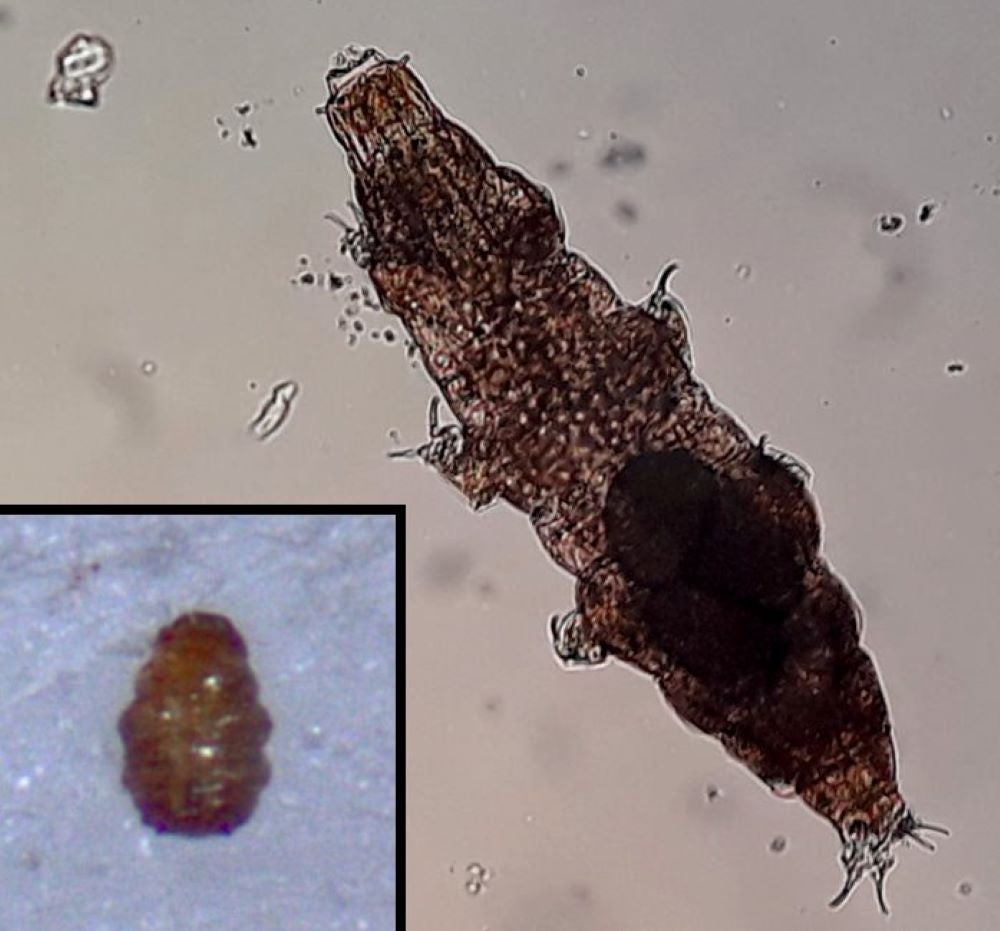Tardigrades ‘can hitch rides on snails but the slime hampers survival’
The microscopic eight-legged animals, also known as water bears, can live in extreme environments.

Tardigrades can hitch a ride on land snails but the nearly indestructible creatures are less likely to survive when covered in snail slime, a new study suggests.
Also known as water bears, the microscopic eight-legged animals can live in extreme environments – including outer space – that would kill most other forms of life.
However, researchers say they have found a possible weakness of the animals – snail mucus.
Results of our experiments support the assumption that snails may transfer active tardigrades for short distances
Tardigrades need water to live actively and can enter a state of anhydrobiosis, where they can tolerate almost complete dehydration for years until water is available again.
This ability is one of many that enables them to survive extreme conditions.
Other characteristics enable tardigrades to survive being frozen in ice for several years, and with no oxygen and exposure to cosmic rays in outer space.
Zofia Ksiazkiewicz and Milena Roszkowska, of Adam Mickiewicz University, Poland, placed tardigrades in the middle of a box to see if they could cross a surrounding barrier on their own.
They compared this movement to when a land snail was allowed to move over them.
The study found that tardigrades left alone were not able to move outside the barrier but when they stuck to the land snails they were moved significantly.
The researchers suggest land snails could aid transfer of tardigrades to new environments.
In a separate experiment, tardigrades were rehydrated after anhydrobiosis and some were exposed to snail mucus.
The authors found 98% of them not exposed to snail mucus survived compared to 34% of tardigrades who were covered in snail mucus.
They conclude that snails may help tardigrades by moving them to new areas but may also negatively affect tardigrades by reducing their chances of survival.
Writing in the Scientific Reports journal, the authors said: “Results of our experiments support the assumption that snails may transfer active tardigrades for short distances.
“On the other hand, the effect of the snails’ mucus on tardigrade recovery to active life after anhydrobiosis was negative.
“Death rates of tardigrades in anhydrobiosis (tun) were higher when affected by mucus compared to mucus-free tuns.”
Bookmark popover
Removed from bookmarks